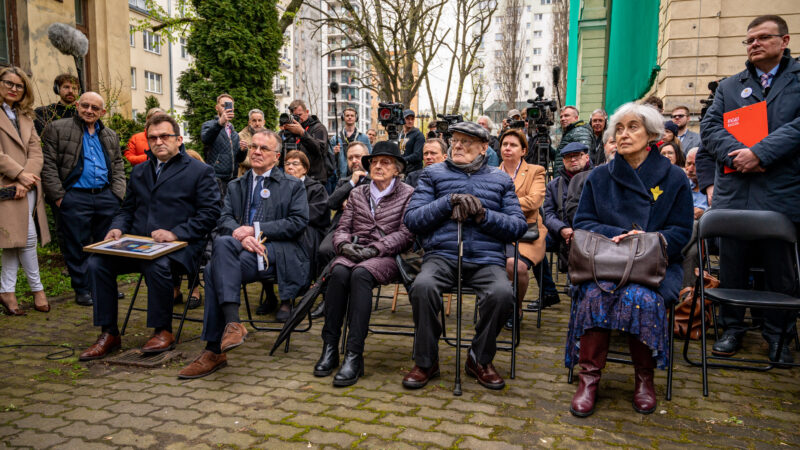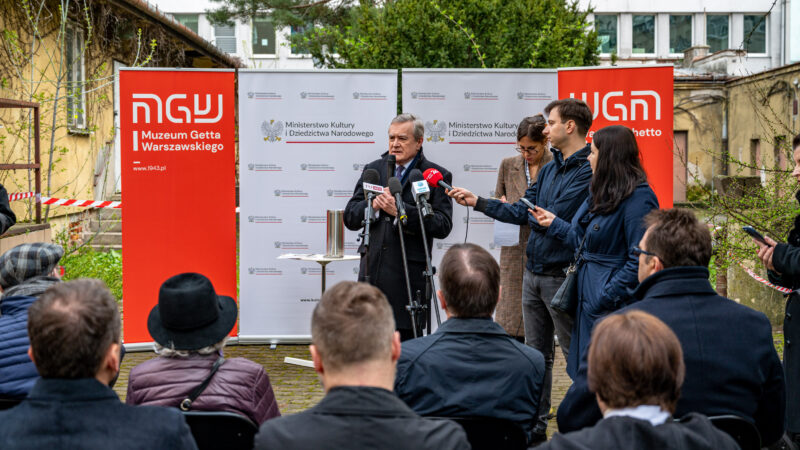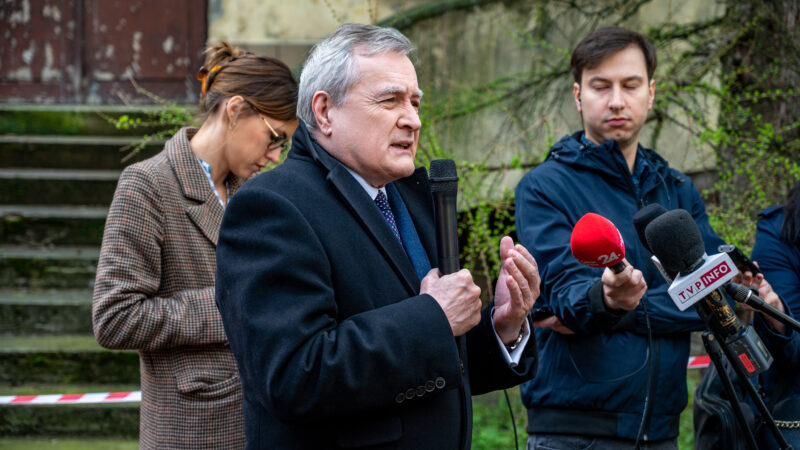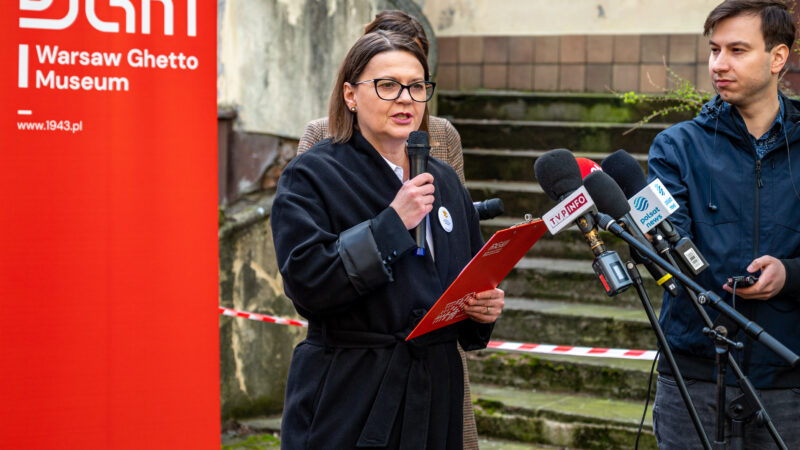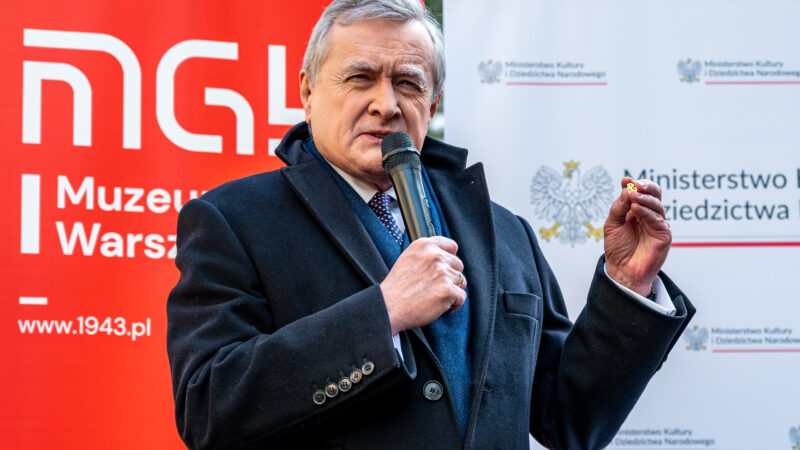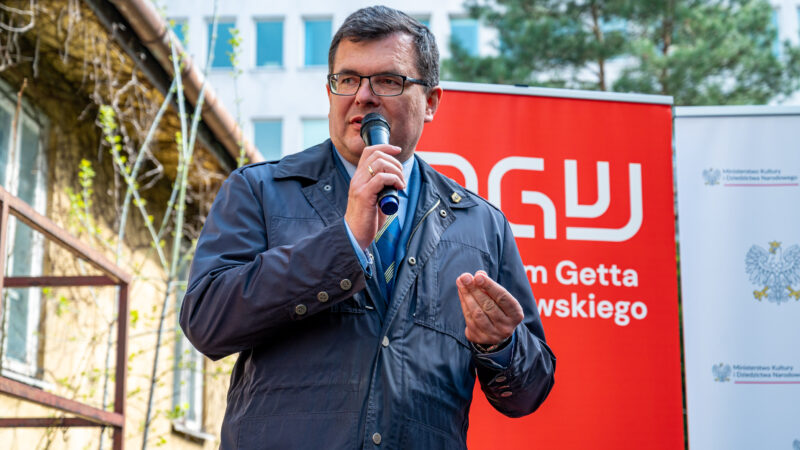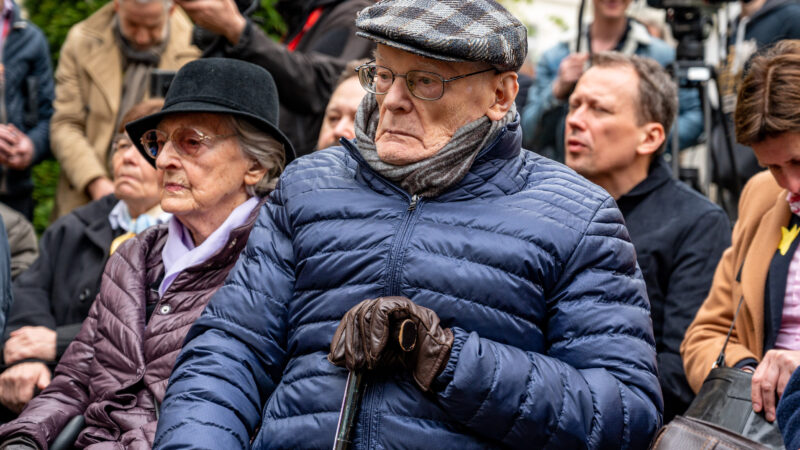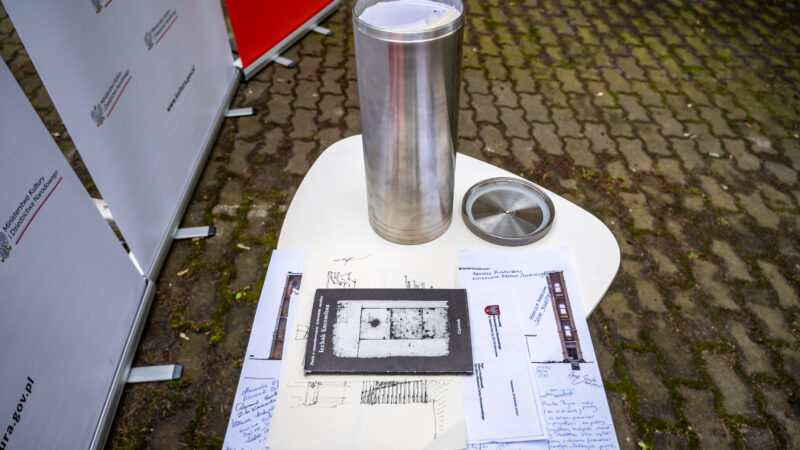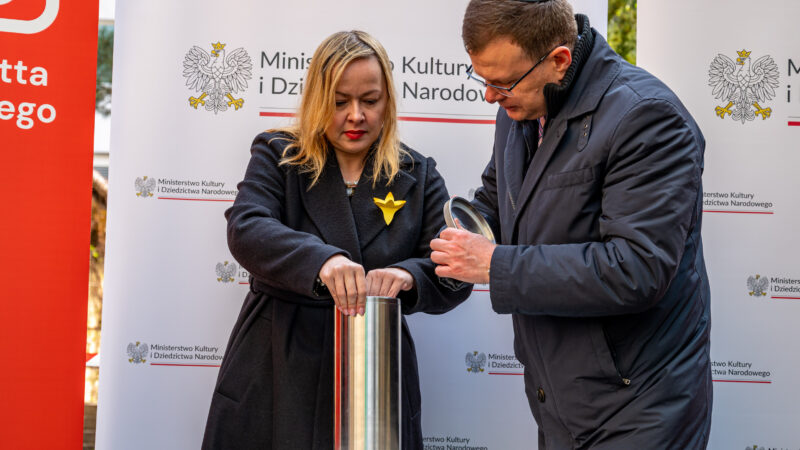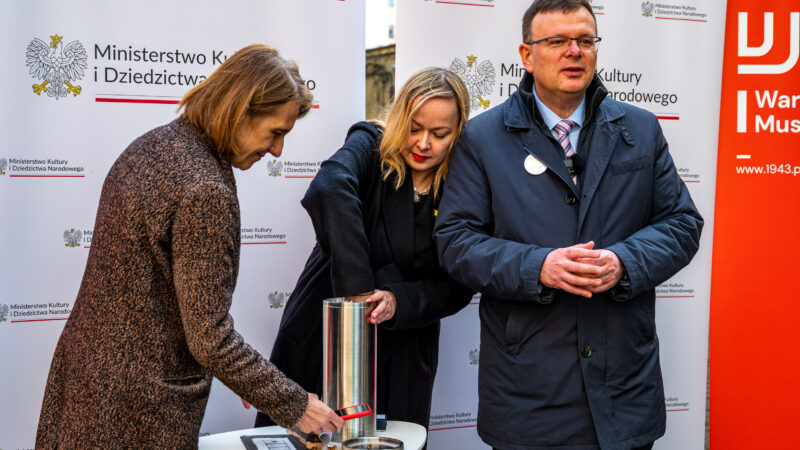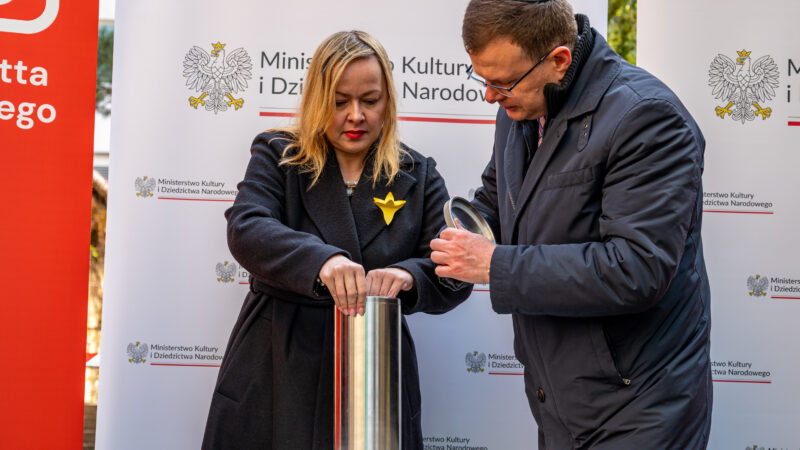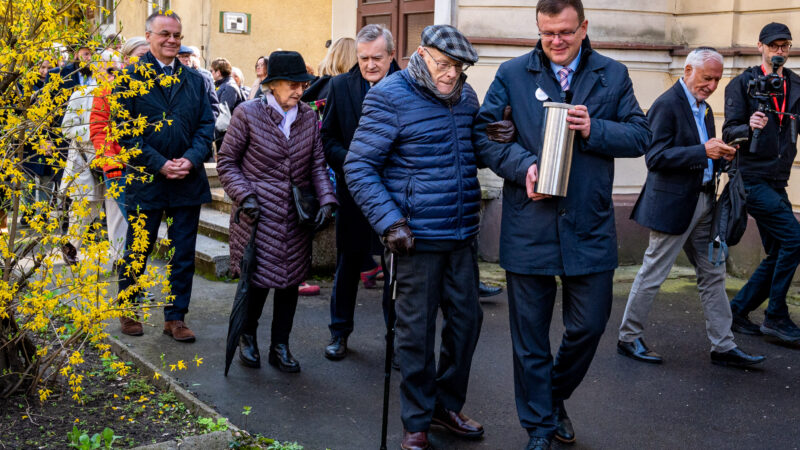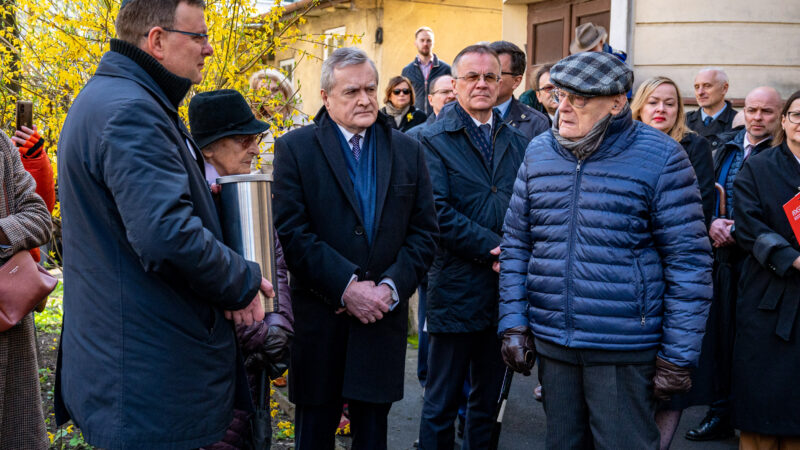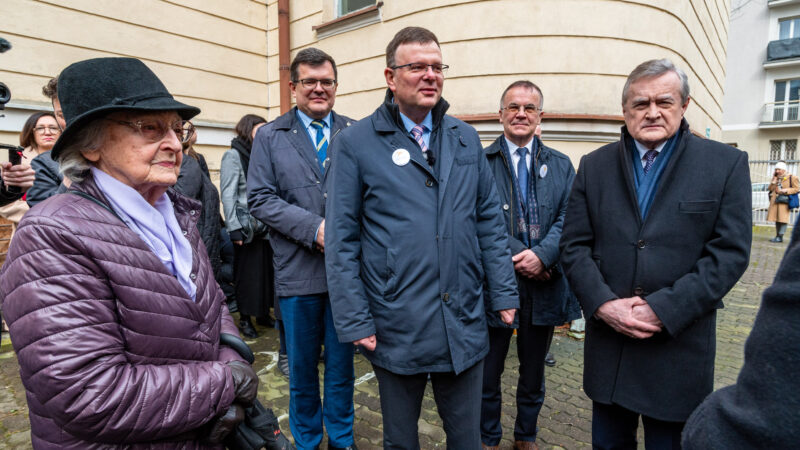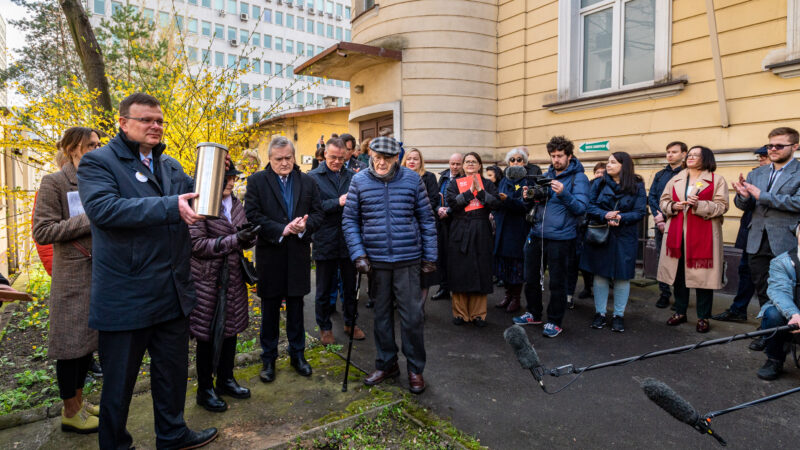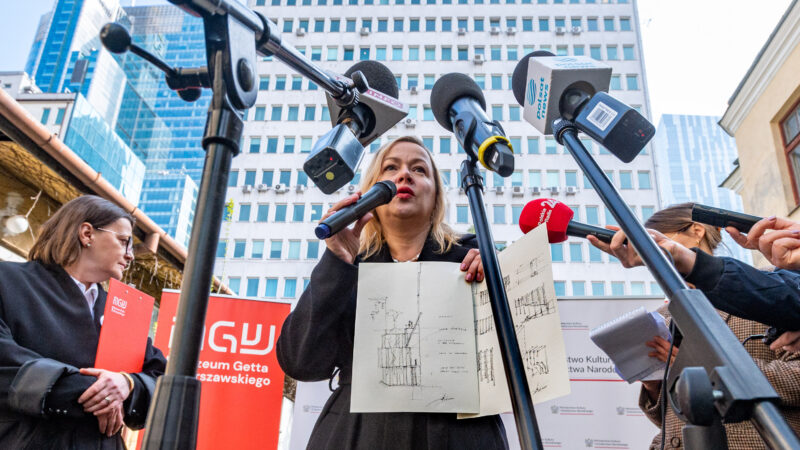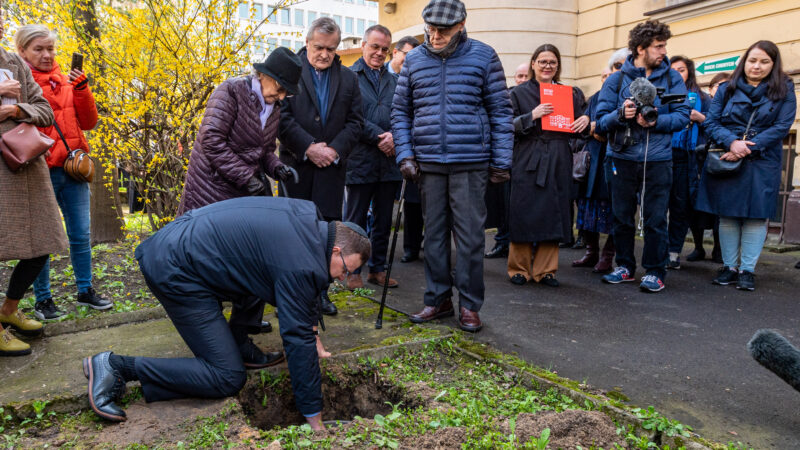Photo Coverage | Placing the Time Capsule
On April 18, the Time Capsule was placed in the garden of the former Bersohn and Bauman Children Hospital. The Capsule will keep memories about the Warsaw Ghetto Museum for next generations.
The burial of the Time Capsule is also a symbolic way to initiate the construction works in the future Museum’s seat, the building of the Bersohn and Bauman Hospital.
„The Time Capsule symbolizes building an institution whose main aim is to commemorate the Warsaw Ghetto and the uprising which took place there. This was the fate the Germans had inflicted on the Jews, including Polish Jews. The main aim of the Uprising was to fight for a dignified death, thus to prove that one can maintain the highest level of humanity even under the most tragic circumstances,” the Minister of Culture and National Heritage Piotr Gliński said during the ceremony.
Among the guests of the ceremony were: the directors and staff of the Warsaw Ghetto Museum, Holocaust Survivor Wacław Kornblum, Righteous Among the Nations Anna Stupnicka-Bando, the MGW Board of Trustees member Małgorzata Naimska, Vice-President of the Polish Post Office Wiesław Włodek. One of the special guests, Ewa Kantor Majewska, delivered a speech on behalf of her mother, Zofia Majewska, the daughter of the Bersohn and Bauman Hospital Director Henryk Kroszczor, born in the Hospital in 1927.
The Time Capsule was filled with different documents and items, such as The Museum Statute, first architectural drafts of the Museum building, a message from the Board of Trustees, souvenirs from special guests and donators, as well as a pen drive with video messages from Zofia Majewska and Marian Turski. An interview with the MGW Director Albert Stankowski was also included into the Capsule.
The Capsule was buried under the only pre-war tree at the site of the Hospital. It was buried at a shallow depth, so that it could be dug up twenty years later, when the 100th anniversary of the Warsaw Ghetto Uprising will be celebrated.


